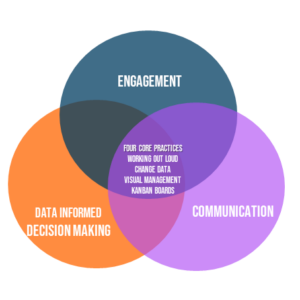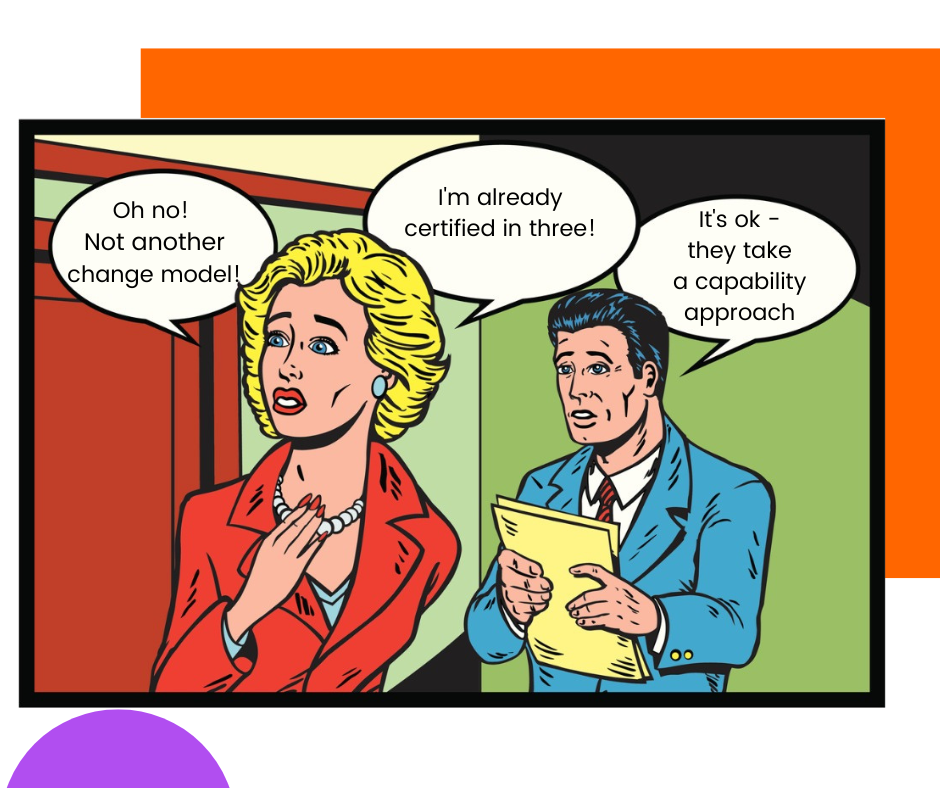To understand why we focus on capabilities, here’s a question we are often asked:
‘Can you provide us with a framework or process for delivering agile change’?
Eeeek! No!
Here’s why!
Change practitioners are already inundated with numerous frameworks and processes. As they go from organisation to organisation, they adapt and work with the ‘framework of the day’ that’s in place. The nature of our work is fraught with continuous change and agility. This means we need adapt quickly and think differently.
The once predictable and prescribed ways of planning and delivering change no longer make sense in this environment of ongoing disruption. We are letting go of the approaches that have served us well for so long. But, what are we actually shifting to?
The shift is towards principles, away from processes
Many of the companies that have embraced agile successfully talk to the power of principles first. Working with principles, instead of a prescribed formula, speeds up delivery and provide flexibility.
The same logic applies to how we deliver change. We take the same approach and move towards capabilities, away from processes. In an increasingly complex and ambiguous world, we need to draw on a range of tools and techniques. This means our work and change efforts are fit for purpose. There’s also the additional benefits of promoting sense-making and co-creation. So, instead of creating yet another framework for agile change delivery, in our Agile Change Playbook, we introduced the focus on capabilities.
Three core agile change capabilities

We explain that at the heart of agile change lie three core change capabilities:
- Data informed decision making
- Continuous engagement
- Visual and transparent communication
For each of these capabilities, and the areas of overlap, we showcase numerous agile change practices that change practitioners can deploy, depending on their change initiative. This shifts the focus from following a methodology or process to:
‘What needs to be done in this change initiative to meet objectives and deliver the most value?’
Applying this capability approach means you can plug and play the agile tools into any change model or framework.
We know for many – this is a leap of faith
This shift represents a move away from following a change methodology that prescribes a list of artefacts to produce, towards initiating change activity that is right-sized for a specific change while being open to iteration as you progress.
This approach soon becomes quite liberating too. Working with guiding principles and capabilities helps keeps our mind nimble and open to endless possibilities as we continue to navigate environments of deep uncertainty.
Curious to find out more?
Check out our Agile Change Manager certificate program where we show you more about 50+ agile change practices.



